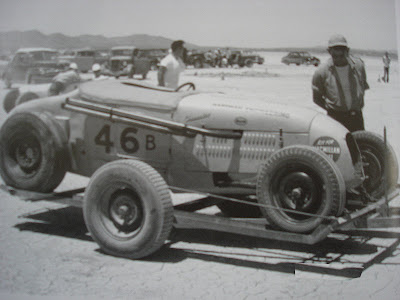




Neat stuff here. These are photos of dry lakes and dual-purpose roadsters. Notice the inherent beauty in these individual builds, and the differences. And also notice they are all the same car...'26 and '27 Model T Roadsters. I especially like the little black one in the background of the last picture. Very genuine, very little! And very "hot rod" for that time.
Also, look at the green beauty with the gal waiting inside. Windshield and lights are just removed as it waits for the opportunity to make a speed trial. Little '40 caps on white walls front and back-very hard to find in the WWII era. Notice the fronts are motorcycle tires, white-walled on both sides.
I like these little beetle bugs. I like the history of their making. I like how they look. These aren't overdone. These aren't Bling Bling. Gosh, they don't look mean, either. They look like jalopy projects built by experimenters, modifiers....but so fitting and proper. This is what real hot rods looked like, because these were...are... real hot rods.
Thanks to Don Montgomery and Robert Genat for the wonderful books I stole these pictures from. Want to learn about real hot rods? Read their books, as well as articles in The Rodder's Journal.


